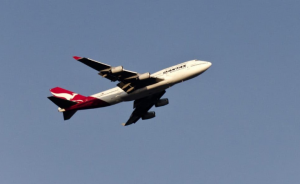What is the “permanent place of abode” in Tax Residency?

Tax Residency
Changing Tax Residency Becomes Easy?
The Full Federal Court of Australia has overturned a previous court ruling that effectively made an individual a tax resident of Australia in the 2011 income year. During that year, the individual in question was living in Bahrain and working in Saudi Arabia, however, had family and financial investments in Australia.
The case turned on the specifics around the definition of “permanent place of abode”, detailing an error in interpretation the Commissioner of Taxation has held in other cases.
Background
In 1990, the taxpayer commenced work in Saudi Arabia, living in that location with his wife and children. After substantial geopolitical problems in the Middle East, the family relocated to Australia in 2001, followed by the taxpayer in 2004.
At this point, the family built a home on the Sunshine Coast in Queensland and lived in that home for a number of years.
In 2009, the taxpayer found new work in Saudi Arabia that provided him with the opportunity to also live a short distance away, in Bahrain. At this stage, the taxpayer informed the court that his intention was to permanently move to Bahrain and relocate his family there. The original intention was to relocate the family in 2011 after a child finished secondary education.
As a result, they maintained the family home. However, the taxpayer moved all of his personal belongings with him, either selling major personal items or leaving minor personal items for use by his children.
From 2009 to 2015, the taxpayer lived in an apartment complex named “Classic Towers” in Bahrain. The style of the apartments was of serviced apartments, typically used by expatriates when working abroad. The intention remained that, when the family moved over to Bahrain in 2011, they would then look to find a family house or alternative accommodation, if necessary. During the relevant period, the taxpayer maintained accommodation that would be fit for a family to reside.
During the year in question (2010/11 income year), issues developed with the family that caused a strain on the relationship. As a result of this, Mr Harding travelled back to Australia on numerous occasions in an attempt to resolve the strain. At all times, the intention was to move the family overseas.
In the end, during 2011 the marital relationship broke down, eventually ending in divorce. The family stayed in Australia. the taxpayer purchased an investment property in Australia in the 2011 year. Also, he maintained a bank account in Australia, purchased other investments and continued to financially support the family.
ATO’s Position
Based on the facts above, as well as the fact that the taxpayer:
- maintained Medicare, private health insurance and superannuation in Australia, and
- declared he was an Australian resident returning home on passenger cards,
the Commissioner determined that the taxpayer was an Australian resident for tax purposes.
Court Decision
The case, according to the Full Federal Court, turned on the treatment of “permanent place of abode” under the residency rules.
Under ITAA 1936 s 6(a)(i), an individual is a resident of Australia where:
(1) they are domiciled in Australia, unless
(2) the Commissioner of Taxation is satisfied that the individual’s permanent place of abode is outside Australia.
The court stressed that the word “unless” is given high importance in this instance, as it provides the Commissioner of Taxation an exemption or “carve-out” from the domicile test. The taxpayer acknowledged that, due to some of the facts listed above, he was domiciled in Australia during the 2011 income year.
In response, the Commissioner argued that the taxpayer lived in rented, fully furnished apartments in Bahrain, which “bare all the hallmarks of temporary accommodation”.
In fact, during the six years the taxpayer lived in the Classic Towers, he had actually moved a couple of times within the apartment complex. This was due to circumstances changing, such as the relationship breakdown (ie he moved into a smaller apartment).
However, the consideration of “temporary accommodation” was outweighed in the court’s opinion by the intention of the taxpayer to leave Australia and make a new home overseas permanently.
In a situation such as this, the court made reference to the term “permanent place of abode” and specifically to the term “place”. In contrast to the Commissioner’s interpretation that a “place of abode” would necessarily be a specific location, the court ruled that the term “place” of abode may also refer to a town or country. In effect, the court ruled that the taxpayer’s permanent place of abode was Bahrain.
In coming to this conclusion, the court referenced the parliamentary notes that accompanied the 1930 legislation which introduced the concept of “resident”.
“In order that the test may not be applied to persons who have definitely abandoned their Australian residence, a condition is provided that a person whose legal domicile is in Australia is not to be treated as a resident if the Commissioner is satisfied that his permanent place of abode is outside Australia.
“That rationale is that a person domiciled in Australia is not made subject to federal income tax when they have abandoned in a permanent way their Australian residence. For the promotion of that rationale, it is unnecessary for the taxpayer to live outside Australia in a particular way.”
In closing, the Full Federal Court sided with the taxpayer that he was not an Australian resident for the 2011 income year.
Effectively, the ATO’s argument that the individual had no “permanent place of abode” overseas because they lived in temporary accommodation was defeated.
If you require any specific advice for your case, please contact one of our tax advisers in our office.
Source: CCH iQ

Leave a Comment